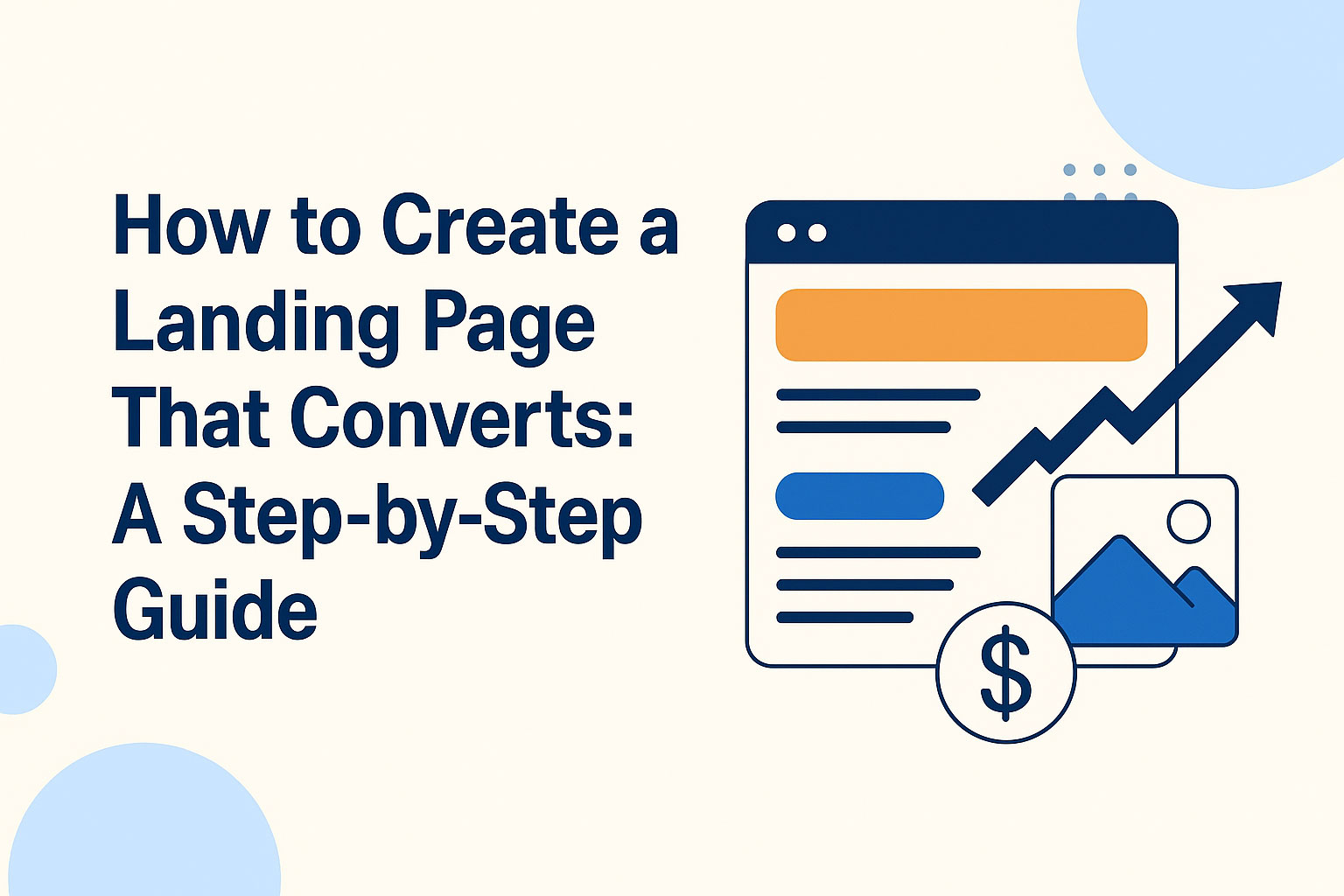Why You Must Learn How to Create a Landing Page
In the modern digital landscape, knowing how to create a landing page isn’t just helpful—it’s absolutely essential. Whether you’re a marketer, entrepreneur, blogger, or small business owner, a landing page acts as the gateway between your marketing efforts and actual conversions. It’s the place where visitors become leads and customers. That transformation? It starts with clarity, strategy, and a solid understanding of your user’s journey.
How to Create a Landing Page
Before diving into design tools or writing copy, let’s clarify what we mean by a landing page. A landing page is a standalone web page created specifically for a marketing campaign. Unlike traditional webpages, which might include menus or links to explore other parts of your site, landing pages are hyper-focused. Their purpose is to convert visitors—nothing more, nothing less.
The Psychology Behind Landing Pages
People don’t browse landing pages the way they read novels. They skim. They decide in milliseconds whether a page deserves their attention. That’s why cognitive triggers like scarcity (“limited time offer”), authority (testimonials from trusted names), and clarity (what do I do next?) are crucial.
Neuroscience tells us that most decisions are emotional, then rationalized later. So your landing page must evoke trust, desire, and urgency—immediately.
Planning Your Landing Page Strategy
A successful landing page begins before the first pixel is placed. Start with:
- A clear goal: Do you want leads, sign-ups, sales?
- Audience insight: What pain points are they trying to solve?
- Competitive analysis: What are others in your niche doing well?
Planning ensures that your page serves both your users and your business objectives.
Choosing the Right Landing Page Type
Depending on your conversion goal, choose from:
- Lead generation landing pages: Ideal for collecting emails or contact info.
- Click-through landing pages: Great for warming up cold traffic before sending them to a product page.
- Product pages: Focused on a single item with a strong buy button.
- Webinar registration pages: Designed to inform and convert via scheduled events.
Essential Elements of a High-Converting Landing Page
There’s a proven anatomy for landing pages:
- Headline: Instantly communicates the core offer.
- Subheadline: Supports the headline with a benefit.
- Hero image or video: Visually reinforces the message.
- CTA (Call to Action): Clear, action-oriented, and visible.
- Social proof: Testimonials, case studies, trust badges.
Each element should earn its keep—if it doesn’t support conversion, it doesn’t belong.
How to Create a Landing Page Structure
Structure is key to readability and conversion. Keep the most critical content “above the fold,” meaning visible without scrolling. Use subheadings to guide readers down the page like stepping stones.
- Use H2 for main sections
- Use H3 for supporting points
- Ensure each section is visually distinct
Writing Compelling Headlines and Subheadings
Your headline is your first (and maybe only) chance to make a strong impression.
Examples:
- “Double Your Email List in 7 Days”
- “Finally, A Course That Makes SEO Simple”
- “Why 9 Out of 10 Bloggers Use This Tool”
Headlines should be specific, urgent, and emotionally driven.
Crafting Effective Calls to Action (CTA)
Your CTA should tell visitors exactly what to do next. Use action verbs like:
- “Download Now”
- “Start My Free Trial”
- “Get Instant Access”
Also, color matters. Orange, green, and blue CTAs often perform well, but always test!
Using Visuals That Support Your Message
A picture is worth 1,000 conversions—if it’s relevant.
Use:
- Explainer videos
- Product demos
- Screenshots
- Custom illustrations
Avoid generic stock photos—they scream “inauthentic.”
How to Write Persuasive Copy for Landing Pages
Use the AIDA formula:
- Attention: Capture with a hook
- Interest: Expand on a relatable problem
- Desire: Present the solution—your offer
- Action: Guide the user to take the next step
Power words like guaranteed, exclusive, proven, and instant can nudge readers toward action.
Trust Elements to Boost Credibility
Without trust, there’s no conversion. Include:
- Testimonials
- Case studies
- Security icons (SSL, privacy assured)
- Company logos of past clients or media mentions
Mobile Optimization for Landing Pages
Over 60% of visitors are mobile. Ensure:
- Fast loading (under 3 seconds)
- Large, tappable buttons
- Simple forms (limit fields to 3-5 max)
SEO Optimization for Landing Pages
Include your focus keyword how to create a landing page:
- In the SEO title
- In the meta description
- In image alt text
- In URL slug
Internal links to blog posts and external links to high-authority pages add SEO value.
Writing for Readability: Tips from Yoast SEO
- Use short sentences (under 20 words)
- Keep paragraphs under 5 lines
- Include subheadings every 300 words
- Limit passive voice to under 10%
- Use transition words like however, therefore, meanwhile
FAQs
What is a landing page used for?
To drive a specific action such as signing up, buying a product, or registering for a webinar.
How long should a landing page be?
Long enough to communicate value, but short enough to keep attention—usually 300 to 800 words.
Do landing pages help with SEO?
Yes, especially if optimized with the right keywords, internal linking, and clear structure.
Can I use my homepage as a landing page?
Technically yes, but dedicated landing pages convert better because they remove distractions.
What tools can I use to build landing pages?
Elementor, Webflow, Leadpages, Unbounce, and Shopify’s native editor are excellent options.
How do I know if my landing page is working?
Track conversion rate, bounce rate, heatmaps, and run A/B tests for clarity.
Conclusion: Turning Clicks into Conversions
Knowing how to create a landing page is one thing. Creating one that converts? That’s the real win. With strategy, structure, and strong copywriting, your page becomes a conversion machine. Use tools like Yoast SEO to keep readability in check, and never stop testing for improvement.



